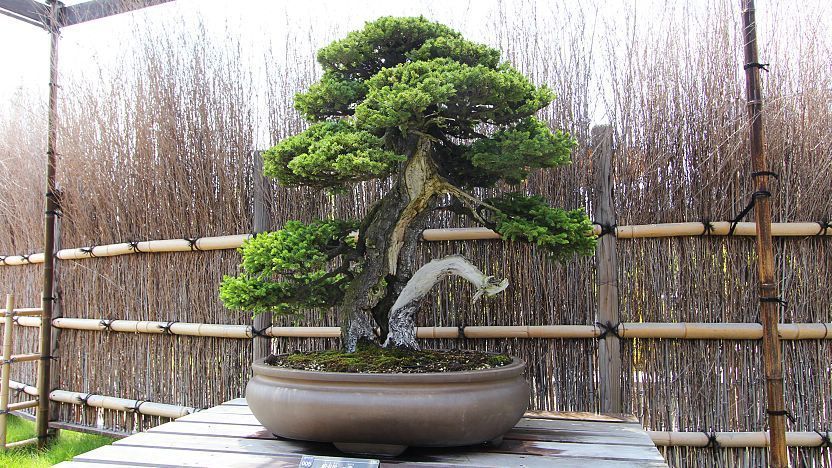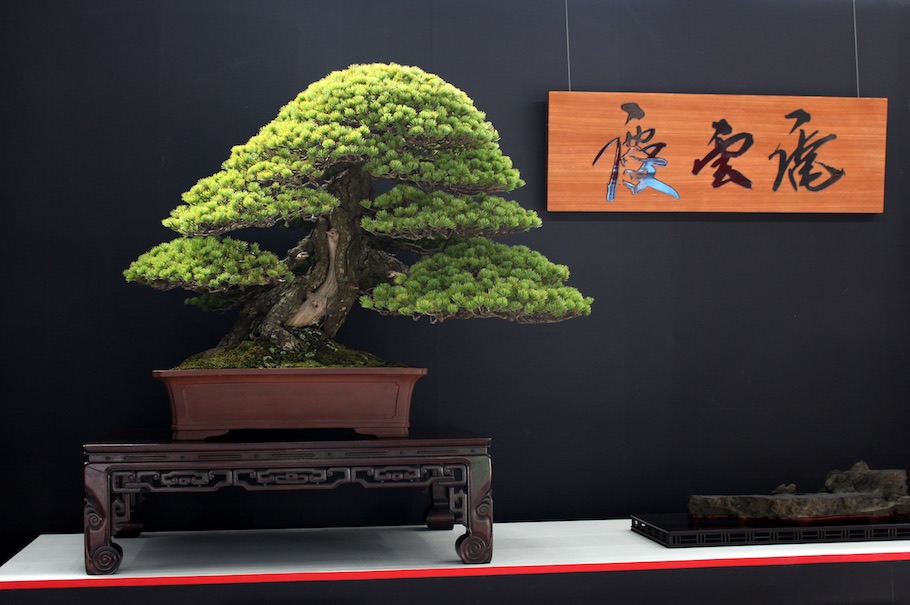Bonsai trees are not inherently Japanese. The art of bonsai originated in China and was later adopted by Japan.
Bonsai, a practice of cultivating miniature trees, has deep cultural roots in both China and Japan. The term “bonsai” means “planted in a container” in Japanese. This art form emphasizes aesthetics and meticulous care. Enthusiasts shape trees to create a natural, miniature landscape.
Bonsai trees are often seen as symbols of patience, balance, and harmony. Today, bonsai is a popular hobby worldwide. It requires dedication, precise pruning, and proper care. Each bonsai tree tells its own unique story. The tradition of bonsai continues to inspire many, blending nature with artistry in a timeless practice.

Credit: www.japan-guide.com
Introduction To Bonsai
Bonsai is the ancient art of growing miniature trees. This practice has fascinated people worldwide. But is Bonsai Japanese? Let’s explore this intriguing question.
Brief History
The history of Bonsai dates back over a thousand years. It started in China during the Tang Dynasty. Known as “penjing,” it was brought to Japan by Buddhist monks. The Japanese refined this art, creating what we now know as Bonsai.
Cultural Significance
Bonsai holds deep cultural significance in Japan. It symbolizes harmony, patience, and nature. The meticulous care of these tiny trees reflects the Japanese appreciation for beauty. Each Bonsai tree tells a unique story.
| Aspect | Description |
|---|---|
| Origin | China |
| Refinement | Japan |
| Symbolism | Harmony and Patience |
Bonsai is more than a plant. It is a living piece of art. The care and dedication required are immense. This makes Bonsai a cherished tradition in Japan.
- Bonsai originated in China.
- Japanese monks refined the art.
- Symbolizes harmony and patience.
The Japanese have elevated Bonsai to an art form. It reflects their respect for nature. Each tree is a small universe, representing balance and simplicity.

Credit: www.reddit.com
Origins Of Bonsai
The art of bonsai is often associated with Japan. However, its origins are more complex. The journey of bonsai is rich and ancient. Below, we delve into the early beginnings and the influence of China.
Early Beginnings
The practice of growing small trees in pots started thousands of years ago. Ancient cultures appreciated the beauty of nature in miniature form. Early records show the cultivation of small plants in Egypt.
But the true beginnings of bonsai trace back to ancient China. The Chinese practiced penjing, the art of creating miniature landscapes. Penjing included trees, rocks, and water features. It was a way to capture the essence of nature.
Influence Of China
Chinese monks brought the art of penjing to Japan. This happened during the Heian period (794-1185 AD). Japanese monks refined the techniques learned from China. They focused on individual trees rather than entire landscapes.
Over time, the Japanese developed their own distinct styles. They emphasized simplicity and harmony. The art of bonsai became part of Japanese culture and tradition.
To summarize the influence:
- Penjing: The Chinese art of miniature landscapes.
- Heian period: Chinese monks introduced penjing to Japan.
- Japanese refinement: Focused on single trees and simplicity.
Bonsai evolved into a unique Japanese art form. Yet, its roots remain deeply connected to ancient China.
Bonsai In Japan
The art of bonsai originated in China over a thousand years ago. It was later adopted and refined by the Japanese. Today, bonsai is closely associated with Japanese culture. It represents harmony, patience, and a deep appreciation for nature.
Adoption And Adaptation
Japanese monks brought the concept of bonsai from China in the Kamakura period. They adapted the techniques to suit their own artistic and spiritual needs. The Japanese focused on creating miniature trees that looked like ancient, mature trees found in nature.
Over time, bonsai became popular among the Japanese nobility and samurai class. It evolved into an art form that combined horticultural skills with a deep philosophy. This adaptation helped bonsai grow into the sophisticated practice we see today.
Japanese Techniques
Japanese bonsai techniques are meticulous and refined. They involve careful pruning, wiring, and repotting to shape the trees. Here are some key techniques:
- Pruning: Removing branches and leaves to shape the tree.
- Wiring: Using wire to bend branches into desired shapes.
- Repotting: Changing the pot and soil to encourage healthy growth.
- Watering: Ensuring the bonsai gets the right amount of water.
Each technique requires patience and precision. The goal is to create a miniature tree that looks natural and beautiful.
The Japanese also developed different styles of bonsai, such as:
- Formal Upright: A straight trunk with evenly spaced branches.
- Informal Upright: A curved trunk that gives a more natural look.
- Slanting: A trunk that slants to one side, mimicking wind-blown trees.
- Cascade: A trunk that cascades down below the pot’s level, like a waterfall.
These styles reflect the diversity and beauty of trees found in nature.
Cultural Impact
The cultural impact of bonsai trees in Japan is profound and enduring. These miniature trees are more than just plants; they are symbols of beauty, tradition, and meticulous artistry.
Symbolism In Japan
Bonsai trees hold deep symbolic meaning in Japanese culture. They represent harmony, peace, and balance. Each tree is a reflection of the natural world, capturing its essence in a small form.
In Japan, bonsai trees are often seen as living sculptures. They are a blend of art and nature. The care and attention given to each tree symbolize patience and dedication. Bonsai trees are also used in Japanese ceremonies and rituals, emphasizing their cultural significance.
Modern Day Practices
Today, bonsai trees are still highly regarded in Japan. They have become a popular hobby for many enthusiasts. Modern techniques have evolved, but the core principles remain the same. Enthusiasts use specialized tools and methods to shape and care for their trees.
Bonsai clubs and societies are common in Japan. They provide a community for those who share a passion for this art form. These groups often hold exhibitions and competitions, showcasing the best bonsai trees.
In homes and gardens, bonsai trees are a symbol of tranquility. They bring a touch of nature into urban spaces. The practice of bonsai continues to be a way to connect with nature and tradition.
| Aspect | Symbolism |
|---|---|
| Harmony | Balance and peace |
| Patience | Dedicated care |
| Art and Nature | Living sculptures |
Bonsai In Other Cultures
Bonsai trees have a rich history in Japan. But, they also found their way into other cultures. These miniature trees have fascinated people worldwide, leading to a global appreciation for this art form.
Spread To The West
The art of bonsai spread to the West during the early 20th century. Soldiers returning from Japan brought bonsai trees. They introduced this art form to Europe and North America. Western artists and horticulturists embraced bonsai, adding their unique styles.
In the 1950s and 1960s, bonsai clubs emerged in the West. These clubs helped spread knowledge and techniques. The first World Bonsai Convention took place in 1980. This event marked a significant milestone for bonsai’s global reach.
Global Influence
Bonsai has influenced many cultures worldwide. Each culture added its twist to the art. In China, the art form known as Penjing is very similar to bonsai. Penjing often features intricate landscapes and water elements.
In Korea, the art of growing miniature trees is called Bunjae. Bunjae emphasizes natural, untrained growth. It reflects a philosophy of harmony with nature. Vietnam has its version called Hòn Non Bộ, which focuses on creating miniature islands and mountains.
| Country | Local Name | Unique Feature |
|---|---|---|
| China | Penjing | Intricate landscapes and water elements |
| Korea | Bunjae | Natural, untrained growth |
| Vietnam | Hòn Non Bộ | Miniature islands and mountains |
Today, bonsai enjoys a worldwide following. Artists from various countries showcase their works at international bonsai conventions. This cross-cultural exchange enriches the art form and brings people together.
Techniques And Styles
Understanding the techniques and styles of bonsai trees can enhance your appreciation for this ancient art. Bonsai, often associated with Japan, involves meticulous care and artistic expression. Let’s delve into the key techniques and popular styles that define bonsai cultivation.
Pruning And Shaping
Pruning and shaping are essential techniques in bonsai cultivation. These methods help maintain the tree’s size and shape. Pruning removes unnecessary branches and leaves. Shaping involves bending and positioning branches. Both techniques require precision and patience.
- Pruning: Regularly trim branches and roots.
- Shaping: Use wires to guide branch growth.
- Defoliation: Remove leaves to encourage new growth.
Pruning and shaping create the desired bonsai form. These techniques ensure the tree remains healthy and aesthetically pleasing. Proper tools, like pruning shears and wire cutters, are crucial for effective pruning and shaping.
Different Styles
Bonsai trees come in various styles, each with unique characteristics. These styles reflect natural landscapes and artistic interpretation. Here are some popular bonsai styles:
| Style | Description |
|---|---|
| Formal Upright (Chokkan) | The trunk is straight and upright. |
| Informal Upright (Moyogi) | The trunk has gentle curves and bends. |
| Slanting (Shakan) | The trunk grows at an angle. |
| Forest (Yose-ue) | Multiple trees in a single pot create a forest effect. |
| Cascade (Kengai) | Branches cascade down like a waterfall. |
Each style represents a different natural scene. The Formal Upright style symbolizes strength and stability. The Informal Upright style appears more relaxed and natural. The Slanting style mimics trees growing on hillsides. The Forest style recreates a miniature woodland. The Cascade style represents trees growing on cliffs.
By mastering these techniques and understanding various styles, you can create beautiful bonsai trees. Each tree tells a unique story through its shape and form.
Care And Maintenance
Caring for a Bonsai tree requires attention and dedication. Proper care ensures the tree thrives and remains healthy. Let’s explore key aspects of Bonsai tree care and maintenance.
Watering And Soil
Watering is crucial for Bonsai tree health. The soil should never be completely dry. Check the soil moisture daily. Use well-draining soil to prevent root rot. A typical soil mix includes akadama, pumice, and lava rock.
| Watering Tips | Soil Composition |
|---|---|
|
|
Seasonal Care
Bonsai trees require different care throughout the year. Each season brings unique needs.
Spring: Prune new growth and repot if needed. Fertilize regularly.
Summer: Provide shade to protect from intense sun. Increase watering frequency.
Fall: Reduce watering and fertilizing. Prepare for colder temperatures.
Winter: Protect from frost and cold winds. Water sparingly.
- Spring: Prune new growth and repot if needed. Fertilize regularly.
- Summer: Provide shade to protect from intense sun. Increase watering frequency.
- Fall: Reduce watering and fertilizing. Prepare for colder temperatures.
- Winter: Protect from frost and cold winds. Water sparingly.

Credit: www.bonsaiempire.com
Conclusion
Bonsai trees are deeply rooted in Japanese culture. They represent patience and artistic expression. While bonsai originated in China, Japan refined the art. Today, bonsai trees are enjoyed worldwide. This beautiful tradition continues to inspire gardeners and artists globally. Explore the world of bonsai and bring a piece of this ancient art into your life.

